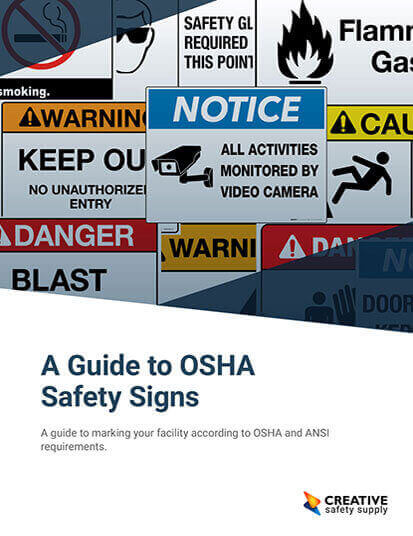
As part of the field of engineering and a component of risk management programs, safety engineering is the discipline of designing environments, equipment, systems, and processes to reduce workplace accidents and improve safety. Health & safety engineers work to identify hazards, find problems within safety systems, and come up with solutions.
While safety engineering has historically been reactionary, taking a preventative approach can stop accidents before they happen. Facilities with dangerous machinery or hazardous chemicals should conduct a risk assessment to identify hazards and pinpoint where safety is compromised, this is where exposure must be controlled.
Engineering controls are classified to be a more effective option than administrative controls and PPE in the Hierarchy of Hazard Controls. Safety engineering can be used to mitigate a range hazards: noise levels, atmospheric conditions, slippery floors, dangerous machinery, and much more. When a hazard cannot be eliminated or substituted, an engineering control is installed, either at the source, along the path of travel, or where the worker is. A few common examples of engineering controls include:
- Ventilation to reduce exposure to hazardous or toxic chemicals.
- Anti-slip tape for shoes to grip onto even in wet or oily conditions.
- Machine guards to physically keep a worker’s hands and arms from coming in contact with the hazard.
A core element of safety engineering is the development of safety-critical systems, safety engineering assures life-critical systems will work without failure as they are intended to. When a preventative measure is designed or a safety-critical system is coded, it should be tested for reliability. The two most common methods for fault modeling in safety engineering are Failure Modes and Effects Analysis and Fault Tree Analysis. Both of these methods are intended to describe the relationship between a hazard (system level) and failures (individual components). FMEA’s and FTA’s won’t solve the problem, but they will help find them and make a plan of action.
Additional Safety Engineering facts:
- Safety engineering is an engineering discipline that assures that engineered systems provide acceptable levels of safety. It is strongly related to industrial engineering, systems engineering, and the subset system safety engineering. Source: https://en.wikipedia.org/wiki/Safety_engineering
- Safety engineering can be applied to various domains, such as aerospace, automotive, chemical, civil, electrical, environmental, mechanical, nuclear, and software engineering. Each domain has its own specific standards, methods, and challenges for ensuring safety. Source: https://learn.org/articles/What_is_Safety_Engineering.html
- Safety engineering involves the identification and analysis of hazards, the development and implementation of risk reduction measures, and the evaluation and monitoring of their effectiveness. Some of the common techniques used by safety engineers are failure mode and effects analysis (FMEA), fault tree analysis (FTA), hazard and operability study (HAZOP), and event tree analysis (ETA). Source: https://www.britannica.com/technology/safety-engineering
- Safety engineering also requires the consideration of human factors, such as human error, human reliability, human-machine interaction, and organizational culture. Safety engineers work closely with human factors engineers, ergonomists, psychologists, and sociologists to design systems that are compatible with human capabilities and limitations. Source: https://en.wikipedia.org/wiki/Safety_engineering
- The International System Safety Society (ISSS) is a professional organization that promotes the advancement of the safety engineering discipline. It provides certification, education, training, publications, and networking opportunities for its members. The ISSS also organizes the annual International System Safety Conference (ISSC), which is the largest and oldest conference dedicated to system safety. Source: https://system-safety.org/


